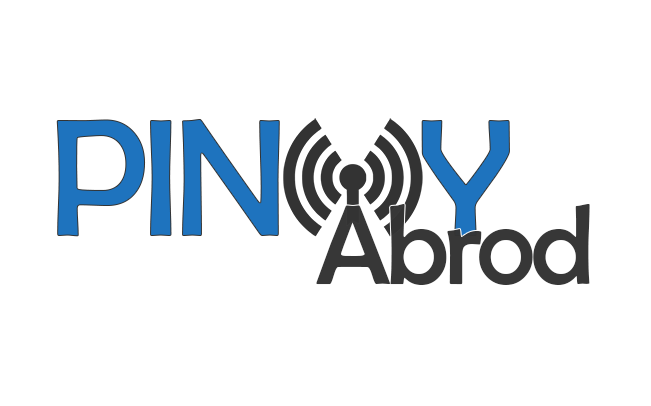As more and more COVID-19 cases are discovered in the Philippines,
especially in Metro Manila, and in over 200 countries around the globe,
ensuring sufficient, safe and accessible water is more important than ever. The
number of COVID-19 cases in the country has reached 3,870, with 182 deaths and
counting. The number of detected COVID-19 cases spiked since the first local
transmission, and the actual number could still be bigger, just unconfirmed.
In its technical brief “Water, Sanitation, Hygiene, and Waste
Management for the COVID-19 Virus”, the World Health Organization (WHO)
underscored that “frequent and proper hand hygiene is one of the most important
measures that can be used to prevent infection with the COVID-19 virus.” WHO
also said that drinking water and sanitation services must be managed safely
during the virus outbreak.
Simply put – the public needs uninterrupted water supply to
protect themselves. This, especially as the nation grapples with the COVID-19
crisis as the dry spell sets in.
Government guarantees
With water being essential in the anti-virus fight, government
vouches that another water crisis is not in sight for Metro Manila and other
Metropolitan Waterworks and Sewerage System (MWSS) service areas. The assurance
comes amid apprehensions of a repeat of the water shortage crisis in the summer
of 2019 that affected over 6.8 million Manila Water consumers.
To ensure 24-hour water supply and reduce water service
interruptions, the MWSS has requested the National Water Resources Board (NWRB)
to increase the water for allocation by concessionaires Manila Water and
Maynilad from 42 to 46 cubic meters per second (CMS). The MWSS
added that its drinking water is compliant with Philippine National Standards for Drinking Water (PNSDW).
Yet water remains elusive for many. As it is, the people’s right
to water as defined by the United Nations (UN) Committee on Economic, Social,
and Cultural Rights General Comment No. 19 is under threat. The UN states that
“the human right to water is indispensable for leading a healthy life in human
dignity… a pre-requisite to the realization of all other human rights”.
But amid the COVID-19 crisis and the Luzon-wide lockdown to
contain this, consumers continue to complain about their water service on the
companies’ social media hotlines.
Manila Water consumers in some Quezon City and Taguig barangays complain
of 12-hour water interruptions, and others in some Marikina, Montalban,
Antipolo, Pasig and Cainta barangays of no connection or weak supply.
Maynilad, on the other hand, has forewarned its consumers – particularly
those in elevated areas – that they will “still experience low pressure to no
water supply daily” as the company allegedly fine-tunes its distribution
network.
Quezon City, Valenzuela, Caloocan, Manila and Makati consumers
report water not being able to reach higher floors of apartments, not having
water to drink or for handwashing, and murky water. At worst, there is no water
at all for several hours, days, or up to three weeks.
Worrisome water and sanitation status
Privatization is the plague on the country’s water service system
that has caused consumers, especially in Metro Manila, so much trouble. It has
led to expensive and poor supply and sanitation services while boosting the
private concessionaires’ profits. Consumers, especially low-income families,
have been disadvantaged, and this becomes glaring all the more in the time of
COVID-19.
The Philippine Statistics Authority (PSA) reports that families in
the National Capital Region (NCR) spent about Php668 monthly or almost 5% of
their income on potable water and water services in 2015. This exceeds the
United Nations Development Programme’s (UNDP) recommendation that no more than
3% of household income should be spent on water.
The Water for the People Network (WPN) has also found that many
families in urban poor communities still spend over Php1,000 per month on water
or as high as 10% or more of their daily earnings. Since the start of water
privatization, water rates have increased seven-fold in the West Zone under
Maynilad (Php7.21 to Php48.53/ per cubic meter or cu. m.), and ten-fold in the
East Zone under Manila Water (Php4.02 to Php39.26/cu. m.).
Philippine water security is worrisome. Water rights advocates and
environmentalists note that 5,663 million liters per day can be sourced from
existing water bodies and systems, but MWSS figures show that the country now
falls below the international per capita “water stress” threshold of 1,700 cu.
m. per year. It adds that the Philippines is fast approaching the “water
scarcity” threshold of 1,000 cu. m. at 1,553 cu. m. per capita availability.
The 2017 National Demographic Health Survey reported that less
than 95% of households have access to improved water sources in 10 of the
country’s 17 regions. The UN defines “improved drinking water sources” as
supposedly “protected by outside contamination, particularly fecal matter”. The
international body however at the same time agrees that these sources – that
may pertain to storage and pipes of varying qualities – are not always safe.
Access to water may also not always mean sustained availability.
WPN points to the government’s lack of management in water sourcing and
distribution – and its submission to private companies for this function – as
the culprit behind this.
Moreover, sewerage services have been neglected. Manila Water
committed 33% coverage of sewerage services and Maynilad 31% for 2017, but only
17% of the companies’ combined service areas have been covered as of 2018.
Sanitation coverage is also low at 20% as of 2018 despite
consumers being billed environmental and sewerage charges for the past 21
years.
The concession agreements (CAs) between government and the water
firms have allowed the companies to rake in over Php60 billion in profits in
the past 15 years. In 2018, both water firms reaped Php6.6 billion each in
profits.
The WPN has called for government to rescind the onerous CAs which
have only undermined government’s regulatory authority and, indeed, sovereignty
to act in favor of the consumers. The CAs: allow charging of excessive rates
even for undone or unfinished infrastructure; give the firms similar powers as
the State in allocating public property for business; create obligations for
government to pay the concessionaires as they do foreign lenders; and let firms
sue governments for uncollected charges. The Duterte administration recently threatened
the water concessionaires that it would cancel the CAs, but this is proving to
be just another of its empty anti-oligarch rhetoric. It has also been overtaken
by the COVID-19 pandemic, to which the Duterte government has also responded with
much inefficiency.
An urgent matter
Water is essential to realize the right to a healthy environment
and, thus, the right to health. Reversing water privatization and eventually
nationalizing it is both imperative and strategic.
In the time of COVID-19, the State must secure the people’s right
to water and to health as among the most urgent socioeconomic measures. It is
welcome that the Metro Manila concessionaires have agreed to allow delayed payment
for water bills.
But beyond this, the government should regulate or directly manage
water concessionaires in Metro Manila and the rest of Luzon to be able to
ensure the following:
1. Efficient water supply. Immediately account for all
areas that have no or problematic water connections and ensure that water is delivered.
2. Safe water supply. Potable water is essential.
3. Accessible water supply. Expedite the installation of
free water connections to unconnected households. Also, write off water bills
for the whole duration of the lockdown, especially for households consuming 30
cu. m. and lower. This is to lessen pressure on household budgets and allow
greater room for recovery after the quarantine period.


